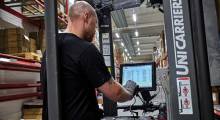For the first time since 2013, the shortage of skilled workers overtakes the economy as the greatest hurdle manufacturers anticipate facing in 2018.
The mixed news of a healthy economy and a struggle to keep up with it are among the insights from the ASQ 2018 Manufacturing Outlook Survey. ASQ, a provider of training, certification, and education resources, has conducted the survey annually since 2009 to gauge manufacturing professionals’ views on the year ahead.
“The results of this year’s survey are both encouraging and cause for concern,” said ASQ Chair Eric Hayler. “While it’s great that the economy is improving, it’s troubling that manufacturers expect to struggle finding the skilled workers they need to be successful.”
According to the survey, 41% of manufacturers say finding skilled workers will be the No. 1 challenge in 2018, compared to 30% who say the economy will be their biggest hurdle.
In last year’s Manufacturing Outlook Survey, 36% of manufacturers said the economy would be the greatest challenge, compared to 30% who claimed finding skilled workers would be the biggest hurdle.
Since 2013, concern over the economy has shed roughly 5% per year. Back then, 46% of respondents cited it as a concern – nearly as much as the other four categories combined. Regulatory issues have held at between 13% and 15% in that time, as have parts shortages (~6%) and “other” (~13%).
In 2013, only 18% of manufacturers were concerned with the availability of skilled workers, rising to 30% two years later, and adding 11% since last year.
“Going into the project, we knew the economy had improved and thought it would no longer be the No. 1 challenge, but we thought the shortage of skilled workers would be a lower percentage,” says Kevin Braley, senior communications specialist for ASQ. “This is an issue that has been at the forefront of manufacturing for years, and one that still needs to be addressed. It’s clear manufacturers are still struggling with finding the right people with the right skills to do the jobs that need to be done.”

To help find the skilled candidates they currently need, 39% of respondents say they have hired an agency to help, while 30% are working with local colleges on programs that teach students the skills needed in manufacturing. Fifteen percent of respondents say they enhanced their benefits package to attract qualified candidates.
And while manufacturers are taking necessary steps to hire for vacant positions, fewer manufacturers anticipate having to fill vacant positions due to retirements; 35% said it’s very unlikely retirements will affect their organization in 2018, compared to 33% who say it will.
Regardless, 43% plan to fill the vacancies on a case-by-case basis, with 69% training new hires on the job. Twelve percent require additional, company-provided classroom training and 6% require third-party classroom training.
Furthermore, 65% of respondents said they expect salary increases in 2017, up from 61% in the 2016 survey, while less than 1% expect a salary reduction. Forty-four percent said they expect their company to increase staff, compared to 47% last year. Forty-three percent of respondents expect their organization will maintain current staffing levels, while 13% said they expect staffing cuts in 2018.
More than 650 manufacturing professionals responded to ASQ’s 2018 Manufacturing Outlook Survey, which was conducted online in October and November. Respondents represent a multitude of industries, including automotive, medical device, aerospace, and oil and gas.







